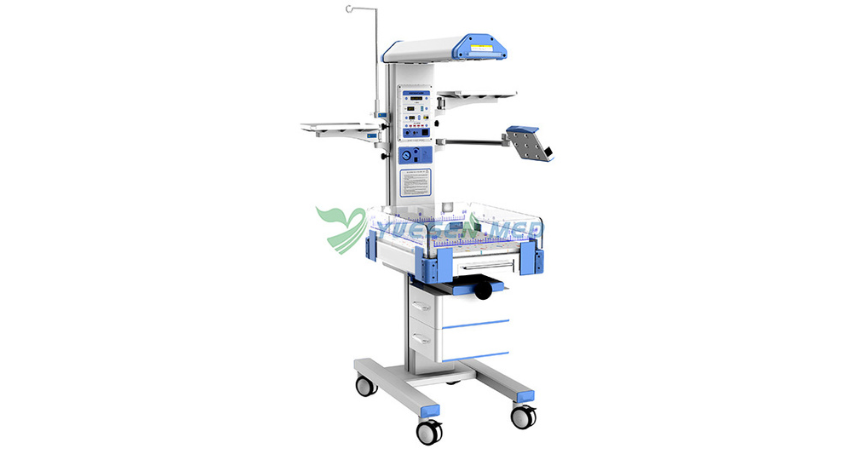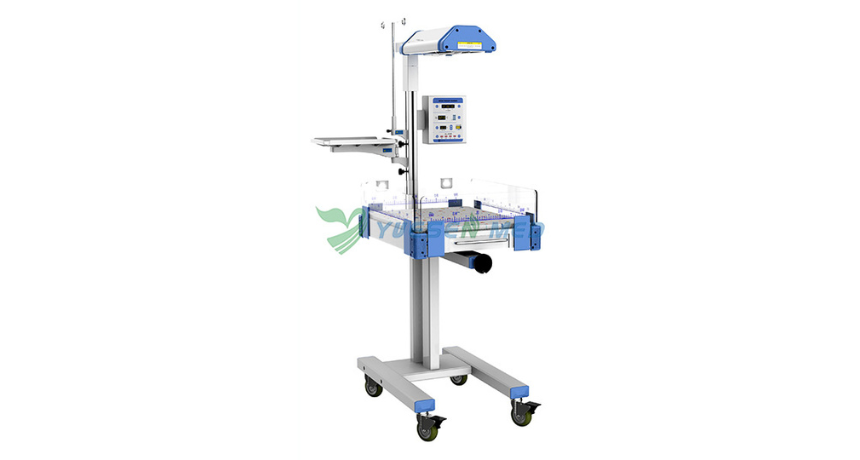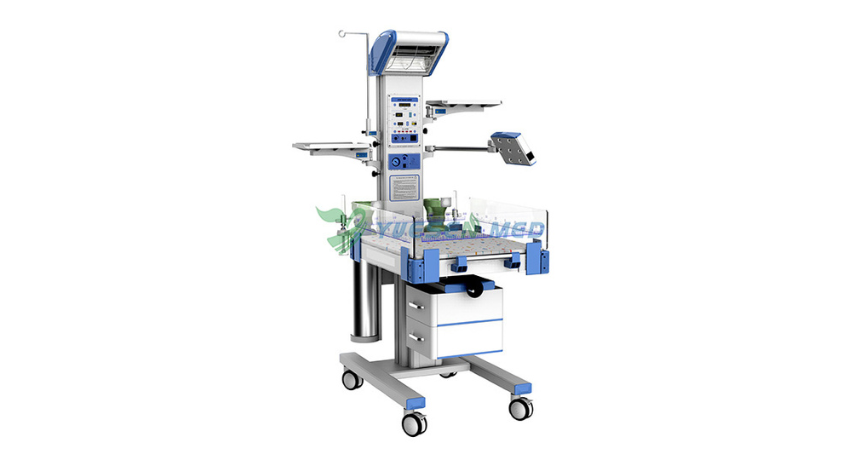Hot Products
YSX500D 50kW DR system set up and put into service in Cambodia.
YSENMED YSX500D 50kW digital x-ray system has been successfully set up and put into service in a hospital in Cambodia.
YSX056-PE serving as a vehicle-mounted x-ray in the Philippines
YSX056-PE 5.6kW portable x-ray unit has been adapted to fit on a truck, to provide mobile x-ray examination service for remote communities in the Philippines.
X Ray Machine To Zimbabwe
x ray machine, 50KW x ray machine
Microscope To Malawi
Achromatic objectives: 4X、10X、40X(S), 100X(S、Oil) Wide field eyepiece: WF10X(WF16X for option) Eyepiece head: Sliding binocular head inclined at 45° Stage: Double layer mechanical stage size 140X140mm, moving range 75X45mm Focusing: Coaxial coarse and
Automated External Defibrillator: A Lifesaving Device for Sudden Cardiac Arrest
Views : 2158
Update time : 2023-08-22 16:40:00
Sudden cardiac arrest strikes like a lightning bolt, a life halted in a matter of moments. In such dire circumstances, every second counts. Enter the unsung hero of medical innovation: the Automated External Defibrillator (AED). This unassuming device, compact yet powerful, holds the potential to be the difference between life and death. In this article, we dive deep into the world of AEDs, uncovering their life-saving capabilities, user-friendly design, and the pivotal role they play in improving survival rates during sudden cardiac arrest.
Understanding Automated External Defibrillators (AEDs)
What is an AED?
An Automated External Defibrillator, or AED, is a remarkable device crafted to counteract sudden cardiac arrest – a condition where the heart abruptly stops pumping blood. The AED steps in as a digital lifeline, delivering controlled electric shocks to the heart with the goal of restoring its natural rhythm.
How does an AED work?
Imagine the AED as a vigilant companion, analyzing the heart's rhythm through sensors. When it detects irregular rhythms, the device prompts the operator to administer a shock. This shock, though it might sound intimidating, is calibrated to "reset" the heart's rhythm, essentially giving it a fresh start.
The Importance of Rapid Response
Critical moments during sudden cardiac arrest
When the heart falters, time becomes the most precious currency. Within minutes, irreversible damage can occur, impacting not just the heart but the brain as well. Here, a swift response is akin to a lifeline thrown into tumultuous waters.
Role of AEDs in improving survival rates
This is where the AED's magic shines. When an AED is employed within the critical window, it has the potential to significantly elevate survival rates. Its automated nature diminishes the chances of human error, ensuring that even those without medical expertise can administer life-saving treatment.
Key Features of AEDs
User-friendly design and operation
Have no fear – the AED doesn't require a medical degree to operate. Its user-friendly design is a testament to inclusivity. The device's clear prompts and intuitive visuals guide users step by step, making it accessible to both professionals and laypersons.
Automated prompts and visual aids
Consider the AED a wise mentor in times of crisis. Its automated prompts and visual aids are your guiding stars, illuminating the path to swift action. The device ensures that the operator places the pads correctly and administers shocks at the right time, leaving no room for ambiguity.
Accessibility and Placement of AEDs
Public spaces, workplaces, and community centers
The AED's ubiquity is a strategic move in the fight against sudden cardiac arrest. You'll find them stationed in public spaces, workplaces, schools, and community centers – places bustling with human activity.
Ensuring easy access and visibility
Picture a bright beacon of hope. AEDs are often encased in vibrant cabinets, catching your eye from a distance. Clear signage ensures that even amidst chaos, the AED's location is unmistakable.
AED Training and Education
Importance of proper training
Though AEDs are designed for simplicity, training enhances confidence. It's like learning to swim before you dive into the ocean – being prepared matters. Basic CPR and AED training courses equip individuals with the skills needed to react effectively.
Public awareness and CPR/AED courses
Knowledge is power, and in this case, it's life-saving power. Community education campaigns and CPR/AED courses empower individuals to be the first line of defense, bridging the gap between life and tragedy.
AED Maintenance and Monitoring
Regular checks and battery replacement
Like any trusted ally, AEDs need routine check-ups. Regular maintenance ensures they're in prime condition, ready to leap into action when called upon. This includes battery checks, ensuring that they're charged and ready.
Ensuring readiness in emergencies
Preparedness is key. Consistent maintenance builds trust in the device's functionality. In a crisis, a well-maintained AED becomes the beacon of hope it was designed to be.
AED Myths and Misconceptions
Clearing misconceptions about AED usage
Misinformation can hinder swift action. Dispelling myths, such as concerns about shocking a living person, is vital. The truth is that the AED's electric shock is a calculated maneuver designed to restore rhythm, not harm.
Addressing concerns and fears
By addressing concerns, we quell fears. The AED's mission is crystal clear: to save lives. Understanding its purpose transforms hesitation into action.
Legal Considerations and Liability
Good Samaritan laws and protection
Fear of legal repercussions shouldn't deter a life-saving act. Good Samaritan laws shield those who respond to emergencies, including AED usage. These laws prioritize human life over legal intricacies.
Responsibilities of AED operators
Using an AED comes with responsibilities, much like driving a car. While the device is automated, adhering to guidelines ensures the safety of both the rescuer and the victim.
Integration of AEDs with Emergency Response
AEDs in ambulances and healthcare facilities
The AED's journey extends beyond public spaces. It's a vital asset in ambulances and healthcare facilities, ensuring seamless transition from initial response to professional care.
Collaboration with emergency services
A harmonious partnership with emergency services optimizes response efficiency. The AED's role is elevated from a standalone device to a cog in a well-oiled emergency machine.
Global Initiatives and AED Implementation
International efforts for A
ED placement
Across the globe, initiatives advocate for AED implementation in densely populated areas. This concerted effort reflects the recognition of AEDs as cornerstones of public health.
Advocacy and policy changes
Advocacy and policy shifts further solidify the AED's standing. The goal is simple yet profound: to ensure that an AED is never out of reach when a life hangs in the balance.
Cost and Affordability of AEDs
Budget-friendly options for various settings
While the value of a life is immeasurable, budget-friendly AED options cater to diverse settings, from homes to schools. The democratization of AEDs ensures accessibility for all.
Long-term cost-effectiveness
Consider the AED an investment in the future. Its potential to save lives far outweighs the initial cost, making it a cost-effective solution in the grand tapestry of healthcare.
Conclusion on AEDs as Lifesaving Devices
In the realm of medical marvels, Automated External Defibrillators stand as a beacon of hope. These unassuming devices, fortified with advanced technology and human intent, bridge the chasm between life and tragedy. Through accessibility, training, and education, AEDs empower us all to be heroes in our own right – to stand as sentinels against the ominous shadow of sudden cardiac arrest.
Understanding Automated External Defibrillators (AEDs)
What is an AED?
An Automated External Defibrillator, or AED, is a remarkable device crafted to counteract sudden cardiac arrest – a condition where the heart abruptly stops pumping blood. The AED steps in as a digital lifeline, delivering controlled electric shocks to the heart with the goal of restoring its natural rhythm.
How does an AED work?
Imagine the AED as a vigilant companion, analyzing the heart's rhythm through sensors. When it detects irregular rhythms, the device prompts the operator to administer a shock. This shock, though it might sound intimidating, is calibrated to "reset" the heart's rhythm, essentially giving it a fresh start.
The Importance of Rapid Response
Critical moments during sudden cardiac arrest
When the heart falters, time becomes the most precious currency. Within minutes, irreversible damage can occur, impacting not just the heart but the brain as well. Here, a swift response is akin to a lifeline thrown into tumultuous waters.
Role of AEDs in improving survival rates
This is where the AED's magic shines. When an AED is employed within the critical window, it has the potential to significantly elevate survival rates. Its automated nature diminishes the chances of human error, ensuring that even those without medical expertise can administer life-saving treatment.
Key Features of AEDs
User-friendly design and operation
Have no fear – the AED doesn't require a medical degree to operate. Its user-friendly design is a testament to inclusivity. The device's clear prompts and intuitive visuals guide users step by step, making it accessible to both professionals and laypersons.
Automated prompts and visual aids
Consider the AED a wise mentor in times of crisis. Its automated prompts and visual aids are your guiding stars, illuminating the path to swift action. The device ensures that the operator places the pads correctly and administers shocks at the right time, leaving no room for ambiguity.
Accessibility and Placement of AEDs
Public spaces, workplaces, and community centers
The AED's ubiquity is a strategic move in the fight against sudden cardiac arrest. You'll find them stationed in public spaces, workplaces, schools, and community centers – places bustling with human activity.
Ensuring easy access and visibility
Picture a bright beacon of hope. AEDs are often encased in vibrant cabinets, catching your eye from a distance. Clear signage ensures that even amidst chaos, the AED's location is unmistakable.
AED Training and Education
Importance of proper training
Though AEDs are designed for simplicity, training enhances confidence. It's like learning to swim before you dive into the ocean – being prepared matters. Basic CPR and AED training courses equip individuals with the skills needed to react effectively.
Public awareness and CPR/AED courses
Knowledge is power, and in this case, it's life-saving power. Community education campaigns and CPR/AED courses empower individuals to be the first line of defense, bridging the gap between life and tragedy.
AED Maintenance and Monitoring
Regular checks and battery replacement
Like any trusted ally, AEDs need routine check-ups. Regular maintenance ensures they're in prime condition, ready to leap into action when called upon. This includes battery checks, ensuring that they're charged and ready.
Ensuring readiness in emergencies
Preparedness is key. Consistent maintenance builds trust in the device's functionality. In a crisis, a well-maintained AED becomes the beacon of hope it was designed to be.
AED Myths and Misconceptions
Clearing misconceptions about AED usage
Misinformation can hinder swift action. Dispelling myths, such as concerns about shocking a living person, is vital. The truth is that the AED's electric shock is a calculated maneuver designed to restore rhythm, not harm.
Addressing concerns and fears
By addressing concerns, we quell fears. The AED's mission is crystal clear: to save lives. Understanding its purpose transforms hesitation into action.
Legal Considerations and Liability
Good Samaritan laws and protection
Fear of legal repercussions shouldn't deter a life-saving act. Good Samaritan laws shield those who respond to emergencies, including AED usage. These laws prioritize human life over legal intricacies.
Responsibilities of AED operators
Using an AED comes with responsibilities, much like driving a car. While the device is automated, adhering to guidelines ensures the safety of both the rescuer and the victim.
Integration of AEDs with Emergency Response
AEDs in ambulances and healthcare facilities
The AED's journey extends beyond public spaces. It's a vital asset in ambulances and healthcare facilities, ensuring seamless transition from initial response to professional care.
Collaboration with emergency services
A harmonious partnership with emergency services optimizes response efficiency. The AED's role is elevated from a standalone device to a cog in a well-oiled emergency machine.
Global Initiatives and AED Implementation
International efforts for A
ED placement
Across the globe, initiatives advocate for AED implementation in densely populated areas. This concerted effort reflects the recognition of AEDs as cornerstones of public health.
Advocacy and policy changes
Advocacy and policy shifts further solidify the AED's standing. The goal is simple yet profound: to ensure that an AED is never out of reach when a life hangs in the balance.
Cost and Affordability of AEDs
Budget-friendly options for various settings
While the value of a life is immeasurable, budget-friendly AED options cater to diverse settings, from homes to schools. The democratization of AEDs ensures accessibility for all.
Long-term cost-effectiveness
Consider the AED an investment in the future. Its potential to save lives far outweighs the initial cost, making it a cost-effective solution in the grand tapestry of healthcare.
Conclusion on AEDs as Lifesaving Devices
In the realm of medical marvels, Automated External Defibrillators stand as a beacon of hope. These unassuming devices, fortified with advanced technology and human intent, bridge the chasm between life and tragedy. Through accessibility, training, and education, AEDs empower us all to be heroes in our own right – to stand as sentinels against the ominous shadow of sudden cardiac arrest.
Related News
Read More >>
 What is the Difference Between Radiant Warmer and Phototherapy?
What is the Difference Between Radiant Warmer and Phototherapy?
Apr .19.2025
Radiant warmers and phototherapy are crucial in neonatal care, but they serve different purposes. Let's dive into the nitty-gritty of these two techniques and explore how they differ, and when each is appropriate.
 YSX056-PE portable digital x-ray unit set up in the Philippines
YSX056-PE portable digital x-ray unit set up in the Philippines
Apr .19.2025
YSX056-PE portable digital x-ray unit has been set up in a hospital in the Philippines and the good quality images please the doctors.
 Is an Infant Radiant Warmer Good for Babies' Health?
Is an Infant Radiant Warmer Good for Babies' Health?
Apr .13.2025
What exactly is the infant radiant warmer, and how does it contribute to a baby's health? Let's dive into this topic and explore the ins and outs of infant radiant warmers.
 What is an Infant Radiant Warmer?
What is an Infant Radiant Warmer?
Apr .12.2025
One of the unsung heroes in neonatal care is the infant radiant warmer. But what exactly is it? Let's dive into the world of infant care and explore the ins and outs of this vital device.



